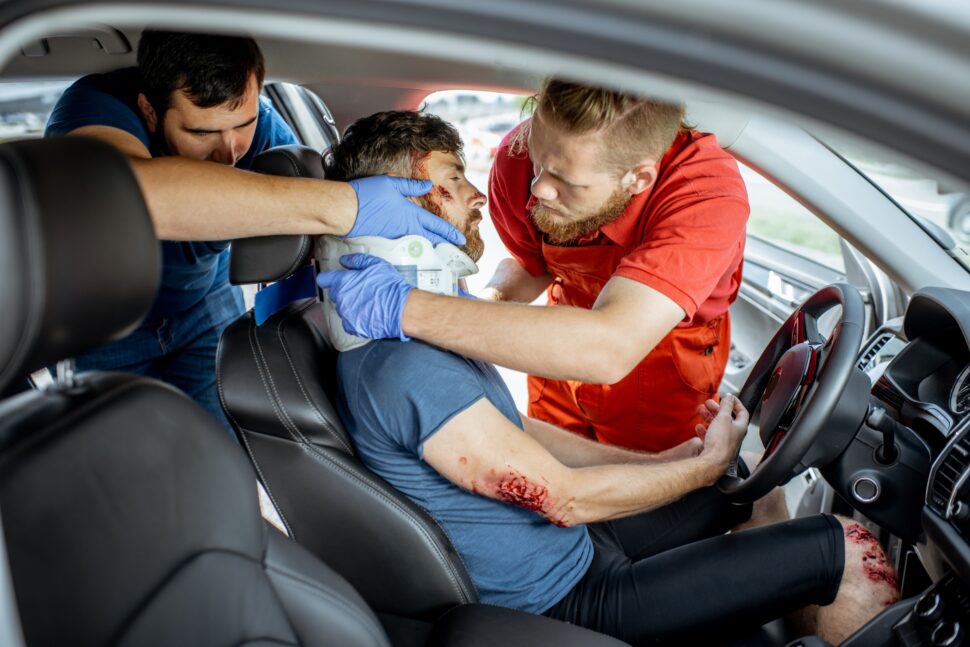A vehicle accident’s thoracic spine nerve injury is a severe and potentially life-altering personal injury. Trauma to the cervical, lumbar, or thoracic spine can injure or sever the spinal cord, resulting in paralysis from the neck to the waist. Car accidents, from drivers’ mistakes to brake specialists, are responsible for over 40% of these injuries.
The medicine used in a spine injury can significantly impact a lawsuit, particularly on a life care plan and future damages based on life-altering repercussions that can come years, if not decades, after the initial trauma.
A person’s spine is divided into three sections.
- Cervical spine (neck and upper back)
- Thoracic spine (middle back – about the level of your lungs)
- Lumbar spine (lower back) (lower back)
Injuries to the thoracic spine
According to the NIH, a thoracic spine nerve injury is significant. Thoracic spine nerve accidents are severe and might limit a person’s mobility in the future due to the apparent effects on mobility and freedom. High-velocity automobile accidents are the most common cause of sprains and fractures. Injury to the thoracic spine can cause lifelong nerve damage and paralysis.
Causes
Vehicle collisions have been the most recent top cause of injury even after recent automotive clutch repair to the spine every year since 2015. In a vehicle collision, the forces of contact cause trauma to the spine, spinal cord, and spinal nerves. To produce spinal cord damage and even paralysis, the point of impact from a collision does not have to be solid or forceful. Whether a person’s head was twisted, seat position in the vehicle, height, weight, gender, and whether the individual suffered from illnesses such as degenerative disc disease that rendered them more sensitive to stress are all factors that might cause spine damage in a car accident.
Symptoms of a vehicle accident-related thoracic spine nerve injury
If you’ve been in a car accident and are suffering any of the following symptoms, you may have suffered a thoracic spine nerve injury and should get medical help right away:
- Muscle deterioration
- Loss of mobility
- Spasms of the muscles
- Numbness
- Temperature sensitivities are lost.
- Loss of touch sensation
- tingling feeling.
- Breathing problems
- Sexual dysfunction is a common problem.
- A prickling feeling runs up and down your spine.
- A searing pain runs down your spine.
- Having digestive issues
- control of the bowels or bladder is lost.
Paralysis is the most severe and life-altering outcome of a spine injury caused by an automobile accident. This happens when a vehicle accident damages a person’s spinal cord to the point that they lose the capacity of movement. The person loses feeling sensation and mobility below the injury site.
Treatment
Although not as severe as cervical spinal cord injuries, thoracic spinal cord injuries are treated quickly with the following treatments:
- Traction
- Decompressing the spinal cord and fusion of the segments around the lesion by surgery
- Stem cell treatments are in the early phases of usage to help reduce inflammation around the injury and perhaps rebuild the spinal cord
- Rehabilitation
Physical therapy will be an essential aspect of a thoracic spinal cord injury patient’s recovery. Patients with thoracic spine nerve injuries between T6 and T12 have adequate torso control when sitting. Therefore, physical therapy will be an essential element of their recovery. These drivers with brake specialization will undergo gait training to learn to walk with the aid of a device while maintaining their residual lower-body function.
Patients will also receive occupational therapy to help them learn to use their hands, which may be challenging at first, and dress and bathe independently. Speech therapy is sometimes employed for people who suffer spinal cord injuries in the upper thoracic spine since they may have limited abilities right after the injury.
